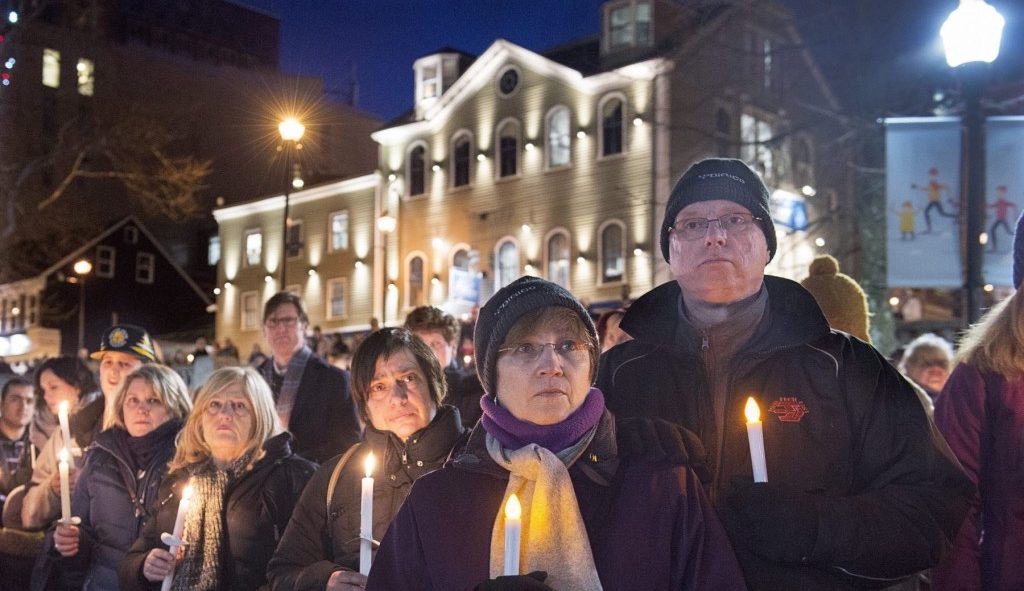
By Lauren Kelly, Editor-in-Chief
The last few years have continued the growing trend of distrust in North America towards basically anyone who looks like they could be Muslim (so, you know, 23 per cent of the world’s population). With more terrorist attacks being committed on North American and European soil, many by people affiliated with or inspired by Daesh, I can kind of understand why people are being reactionary. However, this sentiment has entered into our politics in a big way, with Brexit, Donald Trump, and French Nationalist Marine Le Pen all being very successful.
On January 27, Trump issued an order to block citizens of seven predominately Muslim countries (Syria, Sudan, Iraq, Iran, Yemen, Libya, and Somalia) from entering the US. These bans are for safety reasons—I mean, it’s possible that terrorists are applying as refugees to go to the US and attack its citizens, right? However, research from the CATO Institute shows that zero people have been killed by refugees from any of those seven countries in a terror attack on US soil. Additionally, only 1 Libyan and 26 Yemeni refugees entered the US last year, making their inclusion on the list baffling.
However, when looking at terror attacks, one thing is often overlooked—alt-right terrorism. As we saw on January 29 in a Quebec City mosque, it is alive, well, and motivated by the large-scale movement that has overtaken the US under Trump. Alexandre Bissonnette, the 27-year old student at Université Laval who is the sole suspect in the shooting deaths of six people, “liked” Trump and Le Pen on Facebook, and was known on campus and online for being anti-immigrant and anti-feminist. This was reportedly sparked by a visit from Le Pen to Quebec City, which is when Bissonnette became more politically outspoken and motivated. This story is awfully familiar. How many times have we heard about a young man or woman who seemed normal and balanced, but were later drawn in by Daesh propaganda, becoming more outspoken and involved in the movement?
The six men he killed at the Grand Mosque weren’t terrorists—they were just Quebeckers living their lives and worshipping their God. The Star discussed three of the victims in detail: Khaled Belkacemi was a professor of agriculture at Bissonnette’s university, Abdelkrim Hassen worked in the government in an IT position, and Azzedine Soufiane was a local grocer who opened one of the city’s first community stores and was known for helping newcomers to Quebec City. All were valued members of their communities in one way or another, and all had their lives cut short because some kid was inspired by this hateful movement.
This attack is far from the first. In 2015, Craig Stephen Hicks killed his three Muslim neighbours. Although media reported that it was about a parking dispute, the three students had repeatedly told family that they felt he didn’t like them for how they dressed and who they were. A report by the FBI on hate crimes in 2015 showed that there were 257 hate crimes against Muslims in the US, including both assaults and attacks on mosques—a jump of 67 per cent from the previous year. Although the statistics aren’t out for 2016, I can’t imagine those numbers have improved. Brown people in America (and Canada) have much more to be afraid of from white people than vice versa. And after the Quebec mosque attack, Trump had the gall to respond by saying that this is why we need to tighten our borders and have travel restrictions—even though all the victims and the shooter were from Quebec.
With Trump giving Stephen Bannon, who is aggressively alt-right, more and more power in the government, people are worried that he’ll be the one running things. No matter who is pulling the strings, we have a lot to be afraid of as his presidency progresses. We need to all stay focused on the real enemy: those who seek to kick people out of our society, not those who seek to be a part of it.



